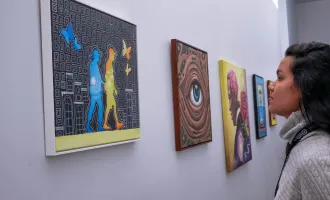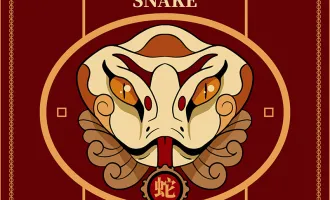Interview with Indre Viskontas: Who Says You Can’t Mix Neuroscience and Opera?
The Bay Area Science Festival (BASF) ran for 10 days this October, and Dr. Indre Viskontas was heavily involved. A neuroscientist, science communicator and operatic soprano, Indre has a vibrant career and unique story and perspective to share with young scientists. (This interview has been edited and condensed.)
Synapse: I’ve been covering the BASF, and noticed that you were heavily involved. Can you tell me how you became so active with the festival?
I.V.: Two years ago, I found out about the festival through a friend of mine, Kirsten Sanford, who goes by the name Dr. Kiki (and has a massive Twitter following). We’re friends in the science communication world, and she invited me to do a couple of events with her. Then [BASF director] Kishore Hari was looking for someone who speaks Italian to do a joint event with a museum in Bologna, where I acted as an interpreter. That was my introduction to the BASF a couple of years ago.
It seems like you became exponentially involved, because this year I saw you in almost everything.
The kinds of events that the BASF hosts are what I do as a science communicator. I have a podcast, I tell stories, and I’m interested in bringing science to the general public. As a woman in science, we’re under-represented, even as science communicators. I tend to get put on things more often, but we can use more women represented on each of these panels. That’s one thing that Kishore and many of the other organizers feel strongly about. BASF is about providing role-models for all kinds of people that are interested in science, including girls.
How did the Inquiring Minds podcast start?
I was a host on the Point of Inquiry podcast for about a year and a half. Then I left with the producer and the co-host Chris Mooney to start Inquiring Minds; we created it just over a year ago. We pitched it to Mother Jones, because we felt that its audience was interested in science but wasn’t getting a lot of science content. We grew very quickly; now the podcast has 25,000 to 30,000 subscribers every week.
Who has been your favorite guest on that show?
Adam Savage [co-host of the Discovery Channel's “MythBusters”] was really fun, and two days later he invited us to his cave in the Mission, where he does a lot of tinkering. I really enjoyed [UCLA geography professor] Jared Diamond; I’ve been a fan of his work for a really long time. Because I also have an interest in music—I’m a musician and I have a faculty position at the Conservatory of Music—I really enjoyed interviewing Dan Levitin, another neuroscientist who does great work on music and wrote the bestselling book “Your Brain on Music.” But we do interviews every week, so there have been a lot of great ones.
How did your involvement in both science and music come about, and how did they fit into one equation for you?
That was a long work in progress. My mom’s a musician and my dad’s an engineer, so there was always that mix in our family life. I was always very involved in music growing up, but I was also really interested in science. I did my undergraduate degree in psychology, and then a Ph.D. in neuroscience, but at the same time I was training my voice and working hard to become a professional musician. When I finished my Ph.D., I felt there were holes in my musical education, so I went and got a Master of Music. During that program, I started to realize how much of a disconnect there is between the way that musicians practice music and the things neuroscientists know about how we learn. I felt that finally I could bring both of my interests and make a real contribution.
At the same time, I was also working at UCSF with patients who had neurodegenerative dementia. Sometimes those patients lose their ability to communicate using language. They find other ways to communicate, and some become very creative. That got me thinking about how our life experiences and the things that happen to us shape our creativity. That’s what I’ve been working on recently in my scientific life: How does creativity work—what’s behind the brain of people who are being creative and being creative as musicians?
You’re involved with the San Francisco Conservatory of Music. Are you doing something there where you combine neuroscience with music education?
I’m on the faculty of the Humanities and Sciences Department, where I teach a course called Training the Musical Brain. The course is about applying neuroscience to help musicians to develop more effective practice strategies. It has a lecture component in which I teach about the brain—what’s happening in the brain when we’re training as musicians and how different brain circuits are involved. We also experiment with different practice strategies and evaluate them. Ultimately we want to create a body of work where we can start to ask some real questions in a scientific way about what is more or less effective in how we develop these skills.
Right now, the project is still in its infancy, but first we’re trying to figure out what it means to be a musician. In the neuroscience of music world, that’s still a big thing, oddly enough: How do you actually test musical ability? That’s something that I’ve been working on with another neuroscientist, Diana Deutsch at UCSD.
Are you still involved at UCSF?
I’m the editor of a journal called Neurocase, and the editor-in-chief is Bruce Miller, who’s at the Memory and Aging Center at UCSF.
How did you move from laboratory science to being a science communicator?
That happened right after I finished my Master of Music. I was at UCSF at the time, and I got this email from a production company in L.A., who said they were looking for someone to play a role in “Mystery Detectives” on the Oprah Winfrey Network. It was through my work on the show that I realized that this was something I loved to do. It allowed me to bring my performance persona into science.
That was in 2010, and I think that was a time when science communication was starting to be more of a thing. Before that, it was kind of a dirty word among scientists—if you did too much media stuff, you weren’t a “real scientist.” I feel like there’s still sometimes that attitude, but the tide is turning. Scientists are realizing that they’re funded by the public, so it’s actually part of their job to inform the public and tell the public why it’s important to keep funding scientists.
It’s great that you were able to stay connected to all of your interests.
What I’ve learned is that there are times when you have to focus on one thing. For the last few months of my dissertation, I put in 20-hour days, and everything else had to go on the back-burner. But then things changed again. There are times in my life when I spent more time doing other things, and times when I had to focus on science.
Whatever you choose to do with your time, do it well. And then, once it’s done, you’ll have more opportunities. If you’re really busy doing a lot of things and do none of them well, then opportunities will dry up quickly. When I look back, it looks as though everything I did was in service of where I am right now, whereas, at the time, people said you need to pick one thing and just do that. I’m happy I didn’t take that advice.
What advice do you have for current Ph.D. students?
I saw the Ph.D. like a 5-year project. If you’ve committed to the Ph.D.—and I think it’s definitely worth doing—you want to make sure that you are focusing on that. At the same time, you can’t only do research all the time. Be wise with how you spend that downtime. The academic world is challenging, just like any field; if you can keep your eyes open to things that really incite your passion, then I think you’re in a much better place later on.


